 Author: Sara Đurđević (Social Inclusion Blog)
Author: Sara Đurđević (Social Inclusion Blog)
I am clinging to the balcony on the eleventh floor, hedged with my panic-filled fear of heights. The very thought of skydiving is making me dizzy. Still, I can’t wait. Hey, I am going to jump out of a plane. But seriously, I am going to jump!
Since I can perform daily activities without difficulty, I did not think that my hearing impairment could be a problem when planning a jump. A couple of times I thought about asking if I can jump with my hearing aids. At the same time, I chuckled when I thought about the possibility of one hearing aid ending up in Subotica, the other in Novi Pazar, and me ending up on Rtanj. I am going to faint. I will surely faint from fear and excitement.
Falcon to Eagle. Over!
Only after completing the training, and right before boarding the plane, I remembered to mention my hearing impairments. Instructors accepted this information very well, not to say a little carelessly. Cica, who is the main person responsible for us skydivers, appears as someone energetic and vigorous in emergencies. We check if I can hear the walkie-talkie with and without hearing aids, which awakens the feeling of concern in my stomach.
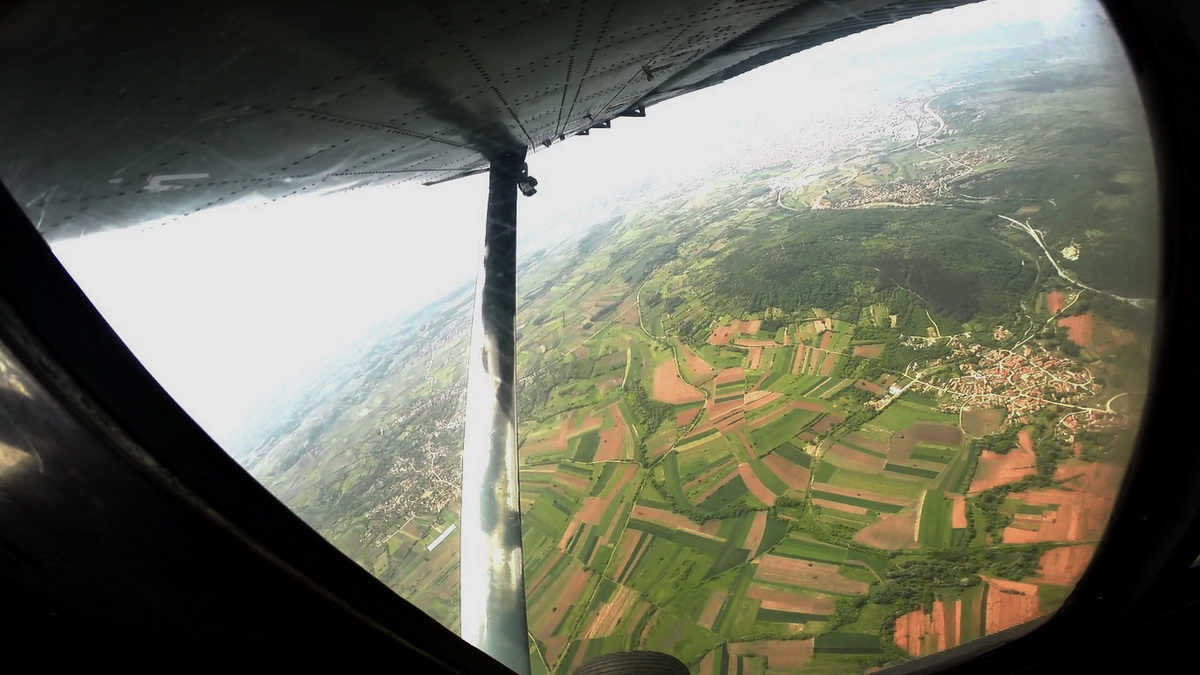 For some reason, the left hearing aid started making screeching noises that morning, which meant that I was to have an all-day alien party in my ears, it could even last longer – depending on whether I will call the police (I mean go to the repair shop) or just wait until they get tired and go to sleep (i.e. wait for the noise to stop on its own, which is what I usually do).
For some reason, the left hearing aid started making screeching noises that morning, which meant that I was to have an all-day alien party in my ears, it could even last longer – depending on whether I will call the police (I mean go to the repair shop) or just wait until they get tired and go to sleep (i.e. wait for the noise to stop on its own, which is what I usually do).
The buzzing of the hearing aid can prevent the transmission of other sounds from the environment, which is why it is very likely that I will not be able to hear the instructions over the radio, and it is clear that removing the helmet and adjusting the “signal” during flight is out of the question. On the other hand, I do not dare jump without my hearing aids, because I am not sure I will be able to hear clearly at the altitude of more than a thousand meters, with all the airflow and strong wind. After all, I have no prior skydiving experience, I just don’t know what to do…
The Eagle can’t Hear!
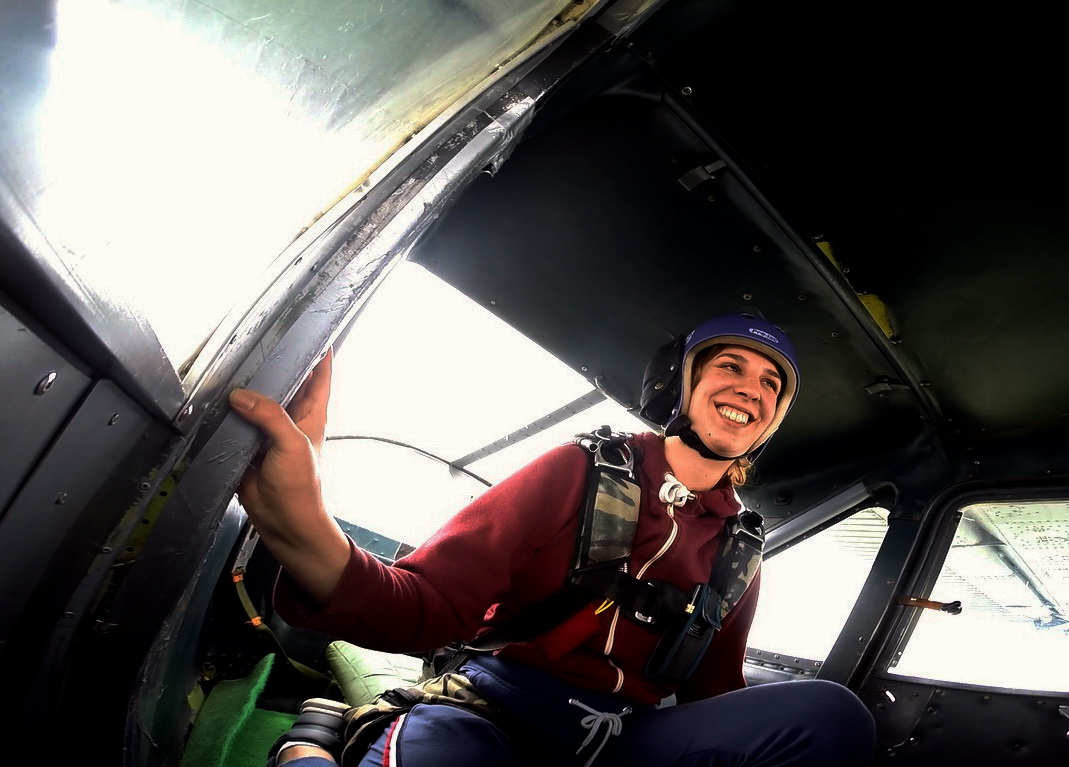 We are on the plane. I took one hearing aid with me and put the other back into the box. I am not scared. And that scares me. I am thinking about how there is no safer place I could be at this moment. I am looking at the houses, which are becoming little white dots, and I prepare myself for the moment I will have to face the height, the source of my greatest anxieties.
We are on the plane. I took one hearing aid with me and put the other back into the box. I am not scared. And that scares me. I am thinking about how there is no safer place I could be at this moment. I am looking at the houses, which are becoming little white dots, and I prepare myself for the moment I will have to face the height, the source of my greatest anxieties.
I do not remember the jump. I just know that I was not afraid. That I did it in the same manner I perform the simplest tasks, which surprised me and disappointed me a little.
Silence.
Even before the instruction came, I pulled on the handles twice, to make sure I did not drop the parachute. The walkie-talkie started speaking. I mean coughing.
Why does the walkie-talkie sound like a radio station that is losing the signal between two huge mountain ranges? I turned pale. Soon after, I hear the familiar voice of Cica, and the hearing aid continues performing its duty.
A moment of pure happiness.
I am swinging my legs as if I am sitting on the edge of a balcony. To make sure it’s real. I laugh and say out loud, “Sara, you’re flying!”
The Eagle has Fallen!
I’m getting closer to the ground. According to the instructions from the training, during the landing, after a certain signal, I should straighten my legs and pull the springs to control my movement. Cica tells me to put my legs together, which I do, getting ready for the next step. The next thing I know, I am on the ground and the parachute is falling over me. Was it supposed to be like this?
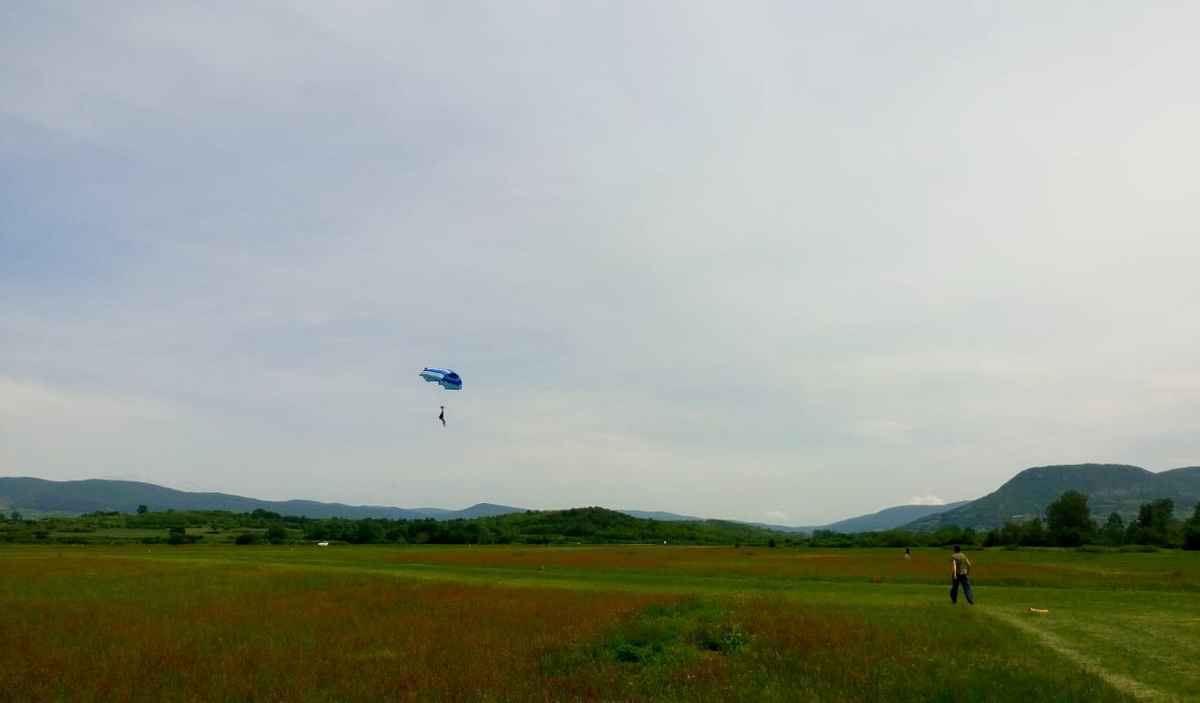 Running towards me, the instructor asks me if I’m okay. I say that I am, realising that I definitely shouldn’t have landed like this. I feel the pain in my right ankle. The thought of taking exams while wearing a cast was going through my head. Cica explained to me that she was shouting so loudly through the whole field that I could have heard her telling me to break even without my hearing aid. Nevertheless, I did not hear her, and it wasn’t because of the hearing aid… Later, my friend (who went with me on this adventure) told me through laughter that I got a sign to brake when I was already on the ground. From his perspective, I looked like a bouncing ball bouncing off the ground multiple times. It actually was really funny.
Running towards me, the instructor asks me if I’m okay. I say that I am, realising that I definitely shouldn’t have landed like this. I feel the pain in my right ankle. The thought of taking exams while wearing a cast was going through my head. Cica explained to me that she was shouting so loudly through the whole field that I could have heard her telling me to break even without my hearing aid. Nevertheless, I did not hear her, and it wasn’t because of the hearing aid… Later, my friend (who went with me on this adventure) told me through laughter that I got a sign to brake when I was already on the ground. From his perspective, I looked like a bouncing ball bouncing off the ground multiple times. It actually was really funny.
What happens when you survive your first independent jump?
I don’t know about other people, but I’m jumping again. But only when my leg fully recovers. This is what I was telling myself the first couple of days after the jump. Today, I would not agree with this. In fact, I would not jump again. At least not alone.
I did not break my leg, but it was swollen for two weeks and I could not walk properly for at least a month. Should I add that this was the best thing that could have happened to me in a situation like this?
What would I have done differently?
I would be lying if I said that I did not think about my reckless decision for a long time. Both because of the possible consequences and because of the fear I felt with regard to jumping again. I’m not sorry I did it, but now I believe that a smarter decision would include:
Informing myself by using the Internet
The Internet is a treasure chest if we are talking about the amount of information we can find on it, so there is nothing easier than searching to see whether someone has already written about jumping from a plane, what it was like, what to look for and, most importantly, whether someone has written about skydiving for people with disabilities. The first thing would be to find an answer to the question: “Is it better to jump with or without hearing aids?”
A few minutes ago, I did a mini test and typed in a few keywords in English, after which several texts about skydiving for people with disabilities popped up on my Internet browser, how it is done, is it possible to jump if someone has a hearing impairment… I did the same thing in Serbian, but I didn’t find anything related to hearing impairments (maybe someone more persistent will have more luck). Then I typed in “jumping from a plane for persons with disabilities”, after which I got more results – so there you go, if you are interested, you can have a look.
Contact a Skydiving Club
Perhaps the most important step in the process of gathering information is contacting skydiving clubs from all over the country (starting from where you want to jump), asking if they had any previous experience working with people with hearing impairments, and selecting the club that has the experience and a proper approach. How to check this? Here we can turn to the Internet again.
And what if there were no such experiences? Then the best option would be to:
Tandem Jump with an Instructor
Even if all the answers to previous questions are affirmative, it would not be such a bad idea to include an instructor on the first jump, because the main goal is to assess the safety, the functioning of the hearing aid – how much can you hear with it, whether the wind affects it, and everything else you did and did not think about. The same goes for any other disability. Jumping is a big deal, and it includes the accumulation of tremendous courage, which is required and necessary, especially if you have to take care of your friend – the disability.
Division of Duties and Responsibilities
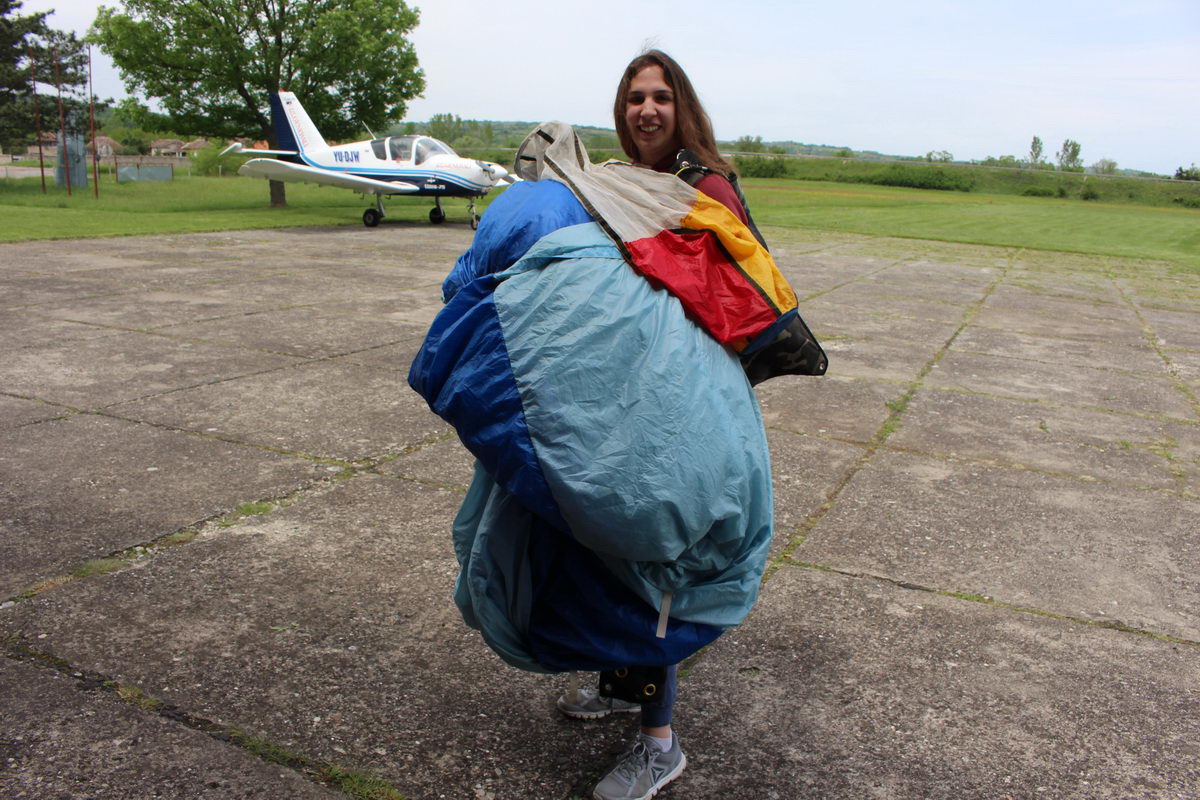 I have to emphasize that in Serbia, people with disabilities are in most cases on the margins – in every possible sense. If you don’t think so, just try to think of a person you know that has a disability, and who jumped from a plane (apart from me). Is it two people? One? None? In any case, it is enough to just go back to the fact that you can find a very small number of articles on this topic in Serbian on the Internet…
I have to emphasize that in Serbia, people with disabilities are in most cases on the margins – in every possible sense. If you don’t think so, just try to think of a person you know that has a disability, and who jumped from a plane (apart from me). Is it two people? One? None? In any case, it is enough to just go back to the fact that you can find a very small number of articles on this topic in Serbian on the Internet…
If we put aside the joke (or reality) that for people who have difficulty with movement, vision, etc., getting out of the house, using the public transport, and other public services are like participating in some extreme sport, then the logical question is – to what extent are (real) extreme sports available for people with disabilities? And how this situation may be improved?
Level: the State
According to my utopian state, every sports club should have a person among its employees who is qualified to work with people with disabilities. And since that is (for now) impossible, it would be good to have regulations and standards that regulate the education of people employed in sports clubs, in terms of training for working with people with different types of disabilities. This includes segments of communication, learning about the abilities and difficulties of people with disabilities, practical work, and the most important things to keep in mind when it comes to each type of disability.
Level: Civil Society Organisations and Sports Clubs
In response to the problem of discrimination, I do not think that a good solution is to establish an organization or sports club that will deal exclusively with extreme sports for people with disabilities. Why make one small, closed and additionally marginalized circle within another, if the existing one can be redesigned into a homogeneous circle with different elements, which together function as a whole?
To begin with, existing organisations for people with disabilities could cooperate with sports clubs through activities in which, on the one hand, persons with disabilities will have the opportunity to engage in extreme sports activities, and on the other hand, people working in sports clubs will have the opportunity to participate in various training courses, expand their knowledge and gain practical experience in working with people with disabilities.
Level: Every Individual
What we as individuals can do, is exactly what we are doing now – talk, dispel prejudices, change our and the consciousness of the people around us on a daily basis.
Extreme sports are not invented and intended for a privileged group of people. To put it plainly, this means that people with disabilities have the same needs as people without disabilities – with variations in the diversity of character, temperament and other personal characteristics of each individual. The only difference is the way these needs are met, that is, put into action. If this is the case, why not work together on putting them into action?
***
Sara Đurđević
Defectologist by vocation, traveller by location. On weekdays, she actively fights for a better status of students with disabilities at the University of Belgrade, and in her free time she dances and engages in activism, through her project on social media called “1906 steps”. As a result of seminars, training courses and workshops she participated in, she paved the path of informal education with a youth leader certificate. She is writing a book that she has yet to name, she wants to start living in the countryside and travel the world.
Source: Social Inclusion Blog
 Government of the Republic of Serbia
Government of the Republic of Serbia



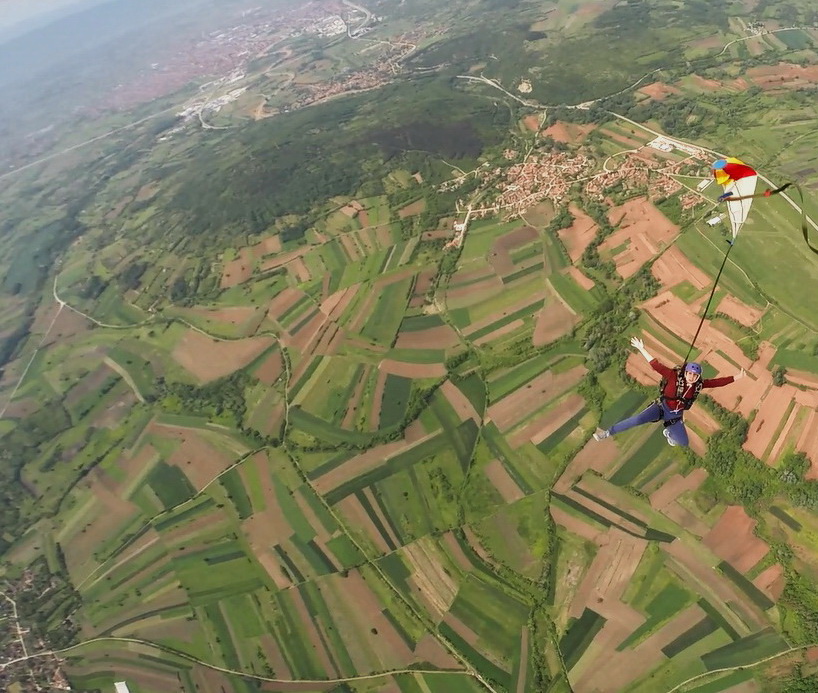
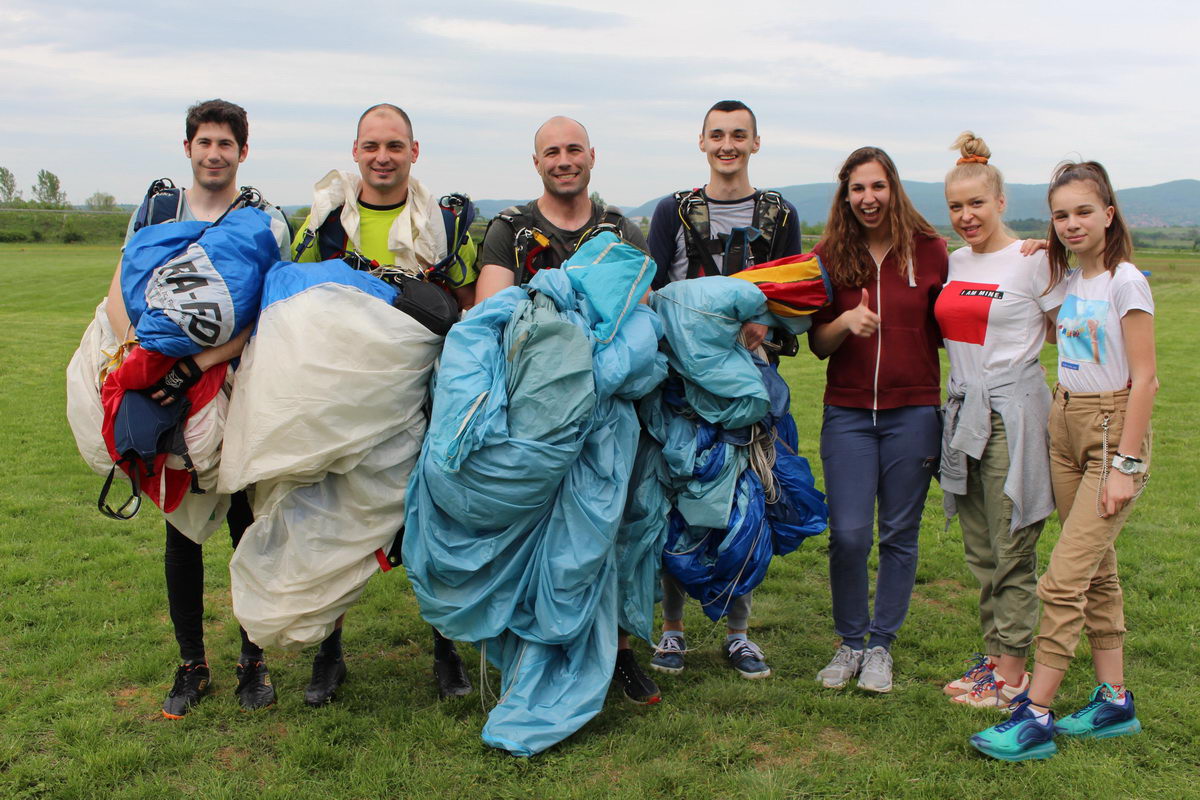












 pdf [271 KB]
pdf [271 KB]
Leave a Comment